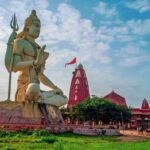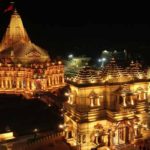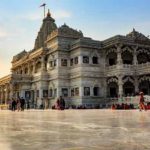Ghushmeshwar Mahadev Temple is one of the most sacred temples of Rajasthan as well as one of the most religiously important places of Hindu Mythology. The temple is dedicated to Lord Shiva and considered one of the 12 Jyotirlingas of Shiva. This temple of Rajasthan is also mentioned in the ‘ Shiva Purana’ which is one of the sacred books in Hinduism and that is why people from all over the country visit this temple to seek blessings from the Lord to fulfill their wishes.
This jyotirlinga of Lord Shiva is believed to be the last on earth and that is why it is having a strong religious significance. The temple is located near the very popular Ranthambore National Park, and the temple is situated at Shiwar village of Sawai Madhopur district, and there are many folk tales are associated with it. It is also said that Lord Shiva visits in all those places where ever his devotees pray to him by heart.
And he also leaves his mark in the form of lingas in the various places which are considered pious and sacred. The surrounding backdrop of the temple is serene and beautiful as the temple is located on the Devgiri Hills of the Shiwai village and called as a hill temple of Rajasthan.
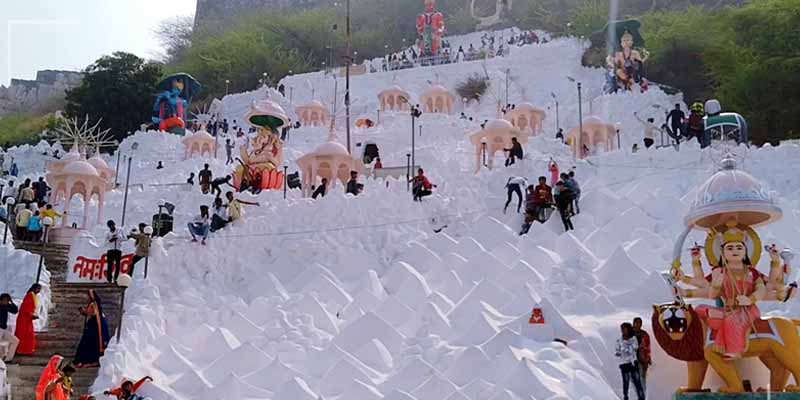
History of Ghushmeshwar Mahadev Temple
The Ghushmeshwar Mahadev Temple, also known as the Ghrushneshwar Temple, is an ancient Hindu temple dedicated to Lord Shiva. It is situated near Ellora caves in the village of Verul, Maharashtra, India. The temple holds immense religious significance and is considered one of the 12 Jyotirlingas, which are the holiest abodes of Lord Shiva.
The history of Ghushmeshwar Mahadev Temple dates back to ancient times, believed to have been built in the 18th century. However, the original temple might have been constructed even earlier. The temple was renovated and reconstructed several times throughout history due to various invasions and natural calamities.
The legend associated with the temple revolves around a devout woman named Kusuma. She was married to a Brahmin named Sudharm and was a great devotee of Lord Shiva. Kusuma’s sincerity and devotion to Shiva resulted in a happy and prosperous life for her family. However, her husband’s other wife, Sudeha, became envious of Kusuma’s good fortune. In a fit of jealousy, Sudeha killed Kusuma’s son.
Distraught by the loss of her child, Kusuma prayed fervently to Lord Shiva at this site. Pleased by her devotion, Lord Shiva resurrected Kusuma’s son, and Kusuma requested Shiva to reside in the place as Ghushmeshwar or Ghrushneshwar, meaning “the Lord of compassion.” The temple is believed to be the place where this miraculous incident occurred Rajasthan Budget Tours.
The architectural style of the Ghushmeshwar Mahadev Temple reflects the Hemadpanthi style of construction, which was popular during the Yadava dynasty rule. It features intricate carvings and sculptures, reflecting the craftsmanship of ancient times. The temple complex also includes other smaller shrines dedicated to various Hindu deities.
The Ghushmeshwar Mahadev Temple continues to be an important pilgrimage site for devotees of Lord Shiva, attracting visitors and worshippers from different parts of India and around the world.
Please note that while the temple has a rich historical and religious significance, the details and specifics of its history might vary in different sources and oral traditions.
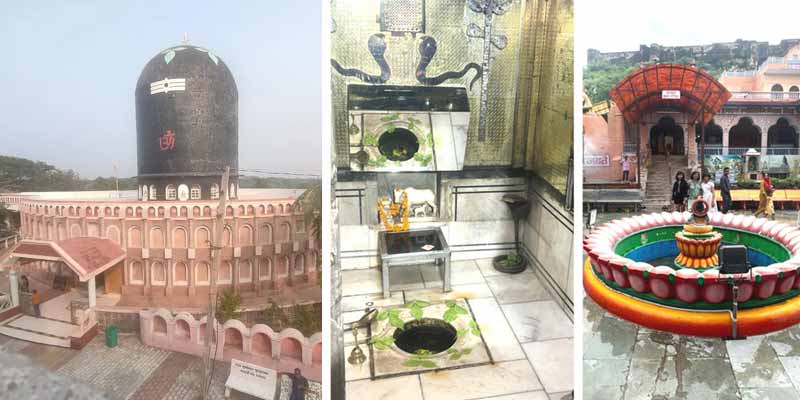
Best Time To Visit Ghushmeshwar Temple
The Ghushmeshwar Temple, dedicated to Lord Shiva, is located in the village of Shiwar in Rajasthan, India. The best time to visit this sacred site is during the winter months, specifically between October and March.
During this period, the weather in Rajasthan is relatively cooler and more pleasant, making it conducive for exploring the temple premises and enjoying the surrounding areas. The temperatures during these months are moderate, ranging from comfortable to slightly chilly, which is more suitable for outdoor activities and temple visits.
Additionally, visiting during the winter months allows you to avoid the scorching heat of Rajasthan’s summer, which spans from April to June. Summers in this region can be extremely hot and uncomfortable for sightseeing or spending extended periods outdoors Rantahmbore Tour Packages.
Moreover, being a religious site, certain festivals and important religious occasions might attract a larger number of devotees. Checking the local religious calendar can help plan a visit during auspicious times if you wish to experience the temple festivities and rituals.
Overall, the period between October and March, with its pleasant weather, makes it the ideal time to visit Ghushmeshwar Temple in Shiwar, Rajasthan.
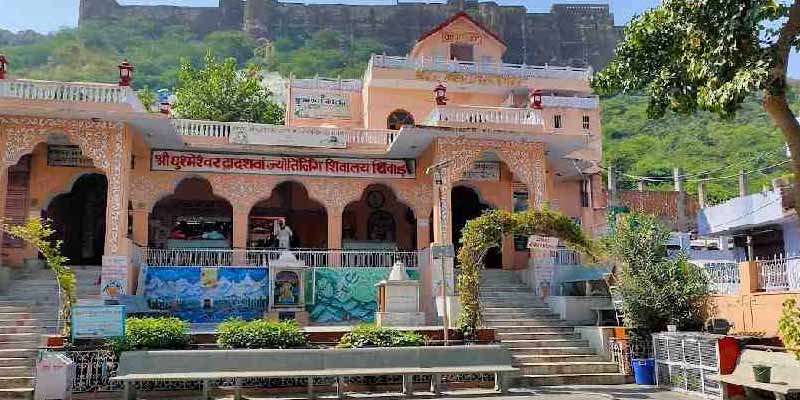
How to Reach Ghushmeshwar Mahadev Temple
Ghushmeshwar Mahadev Temple, located in the village of Shiwar in Rajasthan, India, is a revered Hindu temple dedicated to Lord Shiva. To reach the Ghushmeshwar Mahadev Temple:
By Air: The nearest airport to Shiwar is the Udaipur Airport, also known as Maharana Pratap Airport, located approximately 150 kilometers away. From there, one can hire a taxi or use public transport to reach Shiwar.
By Train: The nearest major railway station is the Abu Road Railway Station, situated around 100 kilometers from Shiwar. Trains from various parts of the country connect to Abu Road. After reaching the station, one can hire a taxi or take a bus to reach Shiwar.
By Road: Shiwar is well-connected by roads to nearby cities like Udaipur, Ajmer, and Abu Road. State transport buses and private taxis are available from these cities to Shiwar. One can also drive to Shiwar using their private vehicle.
Upon reaching Shiwar village, the Ghushmeshwar Mahadev Temple is easily accessible by local transport like rickshaws or by walking, depending on the proximity of your accommodation.
It’s advisable to check the local transportation availability and timings, especially if you’re planning to visit during specific seasons or festivals, as transportation schedules might vary.

